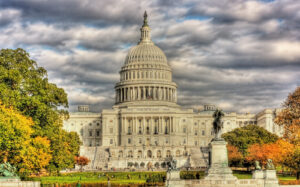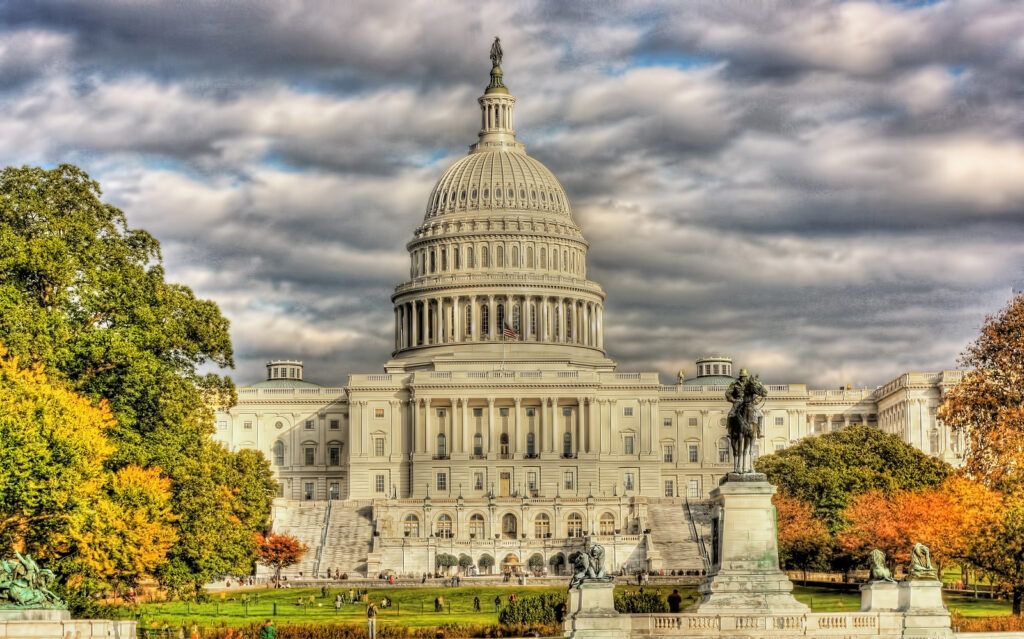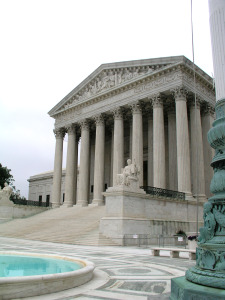The pdf of the article may be accessed here.
By: Robert Chesney
Responding to Holder v. Humanitarian Law Project, 130 S. Ct. 2705 (2009).
Holder v. Humanitarian Law Project may prove to be simply the beginning of a rich vein of emerging jurisprudence at the intersection of national security and civil liberties. Indeed, the majority’s determination that “strict scrutiny” applies may yet prove to be the most important aspect of the decision, one that will not always break the government’s way.
Over the course of the post-9/11 era, the Supreme Court has had a fair amount to say about the government’s response to terrorism as that response relates to military detention and trial before military commissions.[1] Notably, however, it has not had much to say about federal criminal law relating to terrorism until very recently. That changed in June 2010 with the Court’s decision in Holder v. Humanitarian Law Project, which rejected a series of constitutional challenges to a key counterterrorism statute.[2]
The law at issue—18 U.S.C. § 2339B[3]—is frequently referred to as the “material support law,” as its essential function is to prohibit the provision of “material support or resources” to designated foreign terrorist organizations.[4] “Material support or resources,” in turn, is defined to include:
any property, tangible or intangible, or service, including currency or monetary instruments or financial securities, financial services, lodging, training, expert advice or assistance, safehouses, false documentation or identification, communications equipment, facilities, weapons, lethal substances, explosives, personnel (1 or more individuals who may be or include oneself), and transportation, except medicine or religious materials.[5]
The term “training” in that definition is further defined to mean “instruction or teaching designed to impart a specific skill, as opposed to general knowledge,” while the phrase “expert advice or assistance” is defined to mean “advice or assistance derived from scientific, technical or other specialized knowledge.”[6]
From the government’s perspective, the material support law is important in two distinct ways. First, it has an unfocused preventive function in that it inhibits the flow of various forms of support to foreign terrorist organizations, thus (hopefully) limiting their capacity to cause harm. In this respect, the statute functions much like a conventional embargo provision; one merely substitutes the notion of a foreign terrorist organization for the notion of a hostile foreign state as the object of the embargo.
Second, it has a focused preventive function insofar as a person providing support—and thus subject to prosecution and then incarceration in jail—also is a person whom the government believes to be personally dangerous. The latter function is particularly important in circumstances in which a suspected agent of a foreign terrorist organization cannot be linked to a particular plot. The broad definition of support cited above, combined with a permissive mens rea element,[7] ensures that it is relatively easy to charge in comparison to, say, conspiracy to commit a violent act in violation of 18 U.S.C. § 956(a).
On the other hand, these same features also raise an array of constitutional concerns. Is the statute vague or overbroad? Does it violate the First Amendment in terms of expression or association? Does it impute guilt-by-association in violation of the Fifth Amendment? More generally, does the existence of the material support law unduly chill the activities of journalists, advocates, and human rights groups?
These were among the concerns raised by a set of individuals and groups led by the Humanitarian Law Project (“HLP”), which is a non-governmental organization wishing to provide various forms of support for the humanitarian and political activities of the Kurdistan Workers’ Party (“PKK”) and the Liberation Tigers of Tamil Eelam (“LTTE”), both of which have been designated as foreign terrorist organizations since 1997.[8] Anticipating that such activities would expose them to prosecution, HLP—for ease of reference, I will refer to all the coplaintiffs collectively as HLP from this point—sought declaratory and injunctive relief in a civil suit filed in California, which ultimately arrived at the Supreme Court after twelve years of lower court litigation. There, by a 6-3 margin, a majority of the Supreme Court rejected HLP’s argument that the material support law is unconstitutionally vague insofar as it prohibits “training,” “expert advice or assistance,” “service,” or “personnel,” and that, in any event, the law unconstitutionally infringes freedom of expression and association.[9]
The key to understanding the majority opinion by Chief Justice Roberts is that it considers HLP’s arguments through an as-applied lens, emphasizing the particular actions that HLP proposed to undertake rather than engaging in an open-ended review. In particular, the opinion examines the arguments in view of HLP’s stated desire to (1) train PKK members in the use of international law for purposes of dispute resolution, (2) teach PKK members how to petition for relief from “various representative bodies such as the United Nations,” and (3) engage in “political advocacy on behalf of Kurds” in Turkey (just as HLP’s copetitioner proposed to advocate on behalf of Tamils in Sri Lanka).[10]
The substantive analysis begins with the question of vagueness.[11] The problem with HLP’s position, the majority explained, was that the statute was not so much unclear as it was simply broad.[12] The ultimate question was whether the statute provided a “person of ordinary intelligence fair notice of what is prohibited,” the Court observed, and as to the particular actions proposed by HLP, there was more than adequate notice in that some were clearly covered and some were clearly not.[13] In particular, the terms of “training” and “expert advice or assistance” plainly encompassed the proposals to give training in relation to international law or in relation to petitioning bodies such as the U.N. for relief.[14] Conversely, none of the terms in the material support definition plausibly would extend to efforts by HLP to simply advocate on behalf of Kurds living in Turkey.[15] The term “personnel” would not apply because Congress defined that term to require a relationship of direction and control between the organization and the individual, and the term “services” would not apply because the Court understood it to require “concerted activity” actually coordinated between the organization and the individual.[16] The majority conceded that HLP had identified less-readily classifiable scenarios that might arise, but dismissed these as “entirely hypothetical.”[17] Thus the Court left the door open to a revival of the vagueness argument if and when such fact patterns might actually arise.
Having dispatched the vagueness challenge, and having determined along the way that the material support law simply does not apply to the independent advocacy proposed by HLP, the majority then turned to the question of whether the statute violated the First Amendment’s protection of freedom of expression by prohibiting the two forms of training suggested by HLP. Interestingly, the majority rejected the government’s suggestion that this question be answered with reference to a doctrinal framework of intermediate scrutiny, as would befit a content-neutral regulation with an incidental impact on expression.[18] It instead categorized the law as content based in this setting, reasoning that the law’s prohibition of “expert advice or assistance” turned on a content-contingent inquiry into whether expression involved specialized or merely general knowledge.[19] Thus the majority elected instead to apply strict scrutiny.[20] And though HLP conceded that the government has a compelling interest in suppressing terrorism, this development did seem to augur poorly for the government insofar as strict scrutiny requires the government to pursue the least restrictive means available to pursue such interests. But despite the general perception that strict scrutiny is “fatal” in practice, it was not so in this instance.
The central dispute at this point—indeed, the central issue with the broad sweep of the material support law—was whether it mattered that HLP intended no harm by its proposed actions, and truly intended only to encourage terrorist groups to pursue peaceful means of achieving their ends. If so, then the law plainly would be overinclusive and hence would fail strict scrutiny. The majority concluded, however, that this characterization of the impact of HLP’s proposed actions failed to account for the indirect harm they might cause. First, the majority noted that both Congress and the executive branch had formed the judgment that all forms of support to a foreign terrorist organization, no matter how innocuous on their face, were contrary to U.S. interests, and the majority expressly noted that the judiciary owed at least some degree of deference to such judgments in light of comparative institutional competence concerns.[21] Second, the majority concluded that this judgment was correct on the merits, irrespective of deference obligations.[22] It explained that seemingly innocuous support can be harmful in several respects. At least when money or other monetizable assets are involved, for example, the support is fungible and hence either directly or via substitution will enable recipient groups to spend more on their violent activities.[23] But of course HLP was not proposing to give money to the PKK via these training activities (although, as the court noted, one of the copetitioners did originally propose to assist the Tamil Tigers in obtaining tsunami relief funds).[24] Thus it mattered a great deal to the majority’s analysis that it proceeded to make a distinct point about the indirect impact of seemingly-innocuous forms of support. Whatever the form of the support, and whatever the intentions underlying it, support tends to “lend legitimacy to foreign terrorist groups—legitimacy that makes it easier for those groups to persist, to recruit members, and to raise funds—all of which facilitate more terrorist attacks.”[25] Once one accepts this descriptive account, the nexus between the government’s interest in suppressing terrorism and its selection of an embargo-style prohibition on a sweeping array of forms of support becomes much clearer and more defensible.
The majority then turned to the particular forms of training HLP proposed to give to the PKK, inquiring whether they presented a more sympathetic case than the general argument considered above. The majority did not think so. Instruction relating to international law, the court reasoned, could be employed to facilitate the use of negotiations as a stratagem designed to “buy[] time to recover from short-term setbacks, lulling opponents into complacency, and ultimately preparing for renewed attacks.”[26] And such organizations might also use its newfound knowledge of the “structures of the international legal system . . . to threaten, manipulate, and disrupt”—an awkward phrasing that appears to suggest that such training would facilitate “lawfare” in the sense that groups might employ pretextual litigation as a means of restraining their state opponents.[27] As for training in the use of petitions for “relief,” the majority expressed uncertainty as to what HLP actually had in mind, but did note that to the extent that this might include monetary relief then it would present an easy case.[28]
This left only HLP’s freedom of association argument. Here the Court drew a sharp distinction between punishment of association simpliciter and punishment of actions with associative aspects, but also with elements of transferring value of some kind to the recipient group.[29] Because the material support statute encompassed only the latter, in the majority’s view, prior decisions that struck down efforts to punish mere membership in various unpopular or subversive groups were not applicable.[30]
Reflecting on these arguments, it is tempting to treat Holder v. Humanitarian Law Project as a sweeping victory for the government, as an indication of clear sailing ahead for material support prosecutions in a broad array of circumstances. But this would be premature if not foolish. The majority’s opinion wraps up with a series of cautionary statements warning readers not to presume too much about the scope of the holding.[31] As the foregoing analysis emphasizes, after all, the Court’s rationale turned in substantial part on its decision to analyze HLP’s arguments through the lens of the specific and narrow set of actions HLP proposed to undertake. Thus we find the majority warning at the end that one should not assume that “future applications of the material-support statute to speech or advocacy will survive First Amendment scrutiny,” that “a regulation of independent speech would pass constitutional muster, even if the Government were to show that such speech benefits foreign terrorist organizations,” or “that Congress could extend the same prohibition on material support . . . to domestic organizations.”[32] Bearing this in mind, it seems most accurate to say that the majority was correct in its analysis within the narrow bounds it set for itself, and that the decision decides relatively little with respect to close cases that may arise in the future.
And that leads to perhaps the most significant question of all about the decision and its implications. The fact of the matter is that the government has prosecuted violations of the material support law frequently since 9/11 (after having rarely used it between its enactment in 1996 and the fall of 2001), yet few if any of the cases actually brought involved anything resembling the conduct HLP proposed to carry out.[33] It thus is tempting to conclude that all of this discussion is merely academic. But it seems to me that this would be too cavalier an attitude and that it would fail to account for the substantial impact that the mere prospect of prosecution can have. That the statute has not, or at least has not often, been used in expression-sensitive ways does not mean that it cannot be. The majority’s closing caveats seem to hold open the prospect for future declaratory judgment actions exploring these boundaries, perhaps intentionally so. One can readily imagine, for example, a suit concerning the ability of lawyers to file amicus briefs or otherwise to provide counsel to designated groups. Such litigation might draw attention to the little-discussed “license” option in § 2339B, for example, pursuant to which the Secretary of State in conjunction with the Attorney General may issue an “approval” that precludes prosecution on the grounds of providing “personnel,” “training,” or “expert advice or assistance.” In the final analysis, in other words, Holder v. Humanitarian Law Project may prove to be simply the beginning of a rich vein of emerging jurisprudence at the intersection of national security and civil liberties. Indeed, the majority’s determination that “strict scrutiny” applies may yet prove to be the most important aspect of the decision, one that will not always break the government’s way.
[1]. See, e.g., Boumediene v. Bush, 553 U.S. 723, 732–33 (2008) (holding that Congress violated the Suspension Clause by attempting to replace habeas jurisdiction with a truncated form of review for noncitizens held in military custody at Guantanamo); Hamdan v. Rumsfeld, 548 U.S. 557, 567 (2006) (holding that the system of military commissions established by presidential order violated the Uniform Code of Military Justice); Hamdi v. Rumsfeld, 542 U.S. 507, 509 (2004) (holding that the September 18, 2001, Authorization for Use of Military Force conferred authority to use military detention in relation to persons who bore arms for the Taliban in Afghanistan, but that an American citizen held on that ground has a Fifth Amendment right to more substantial procedural safeguards than had been given in that instance).
[2]. Holder v. Humanitarian Law Project, 130 S. Ct. 2705 (2009).
[3]. 18 U.S.C. § 2339B (2006).
[4]. In fact, § 2339B is only one of several such laws. For an overview and discussion of the origins of § 2339B, see Robert Chesney, The Sleeper Scenario: Terrorism-Support Laws and the Demands of Prevention, 42 Harv. J. on Legis. 1, 4–21 (2005).
[5]. 18 U.S.C. § 2339B(g)(4) (2006) (incorporating by reference 18 U.S.C.
§ 2339A(b)).
[6]. 18 U.S.C. § 2339A(b)(2)–(3) (2006).
[7]. There is no need to prove the defendant intended any harm, but simply that the defendant acted knowingly and with knowledge that the recipient either had been formally designated by the Secretary of State to be a “foreign terrorist organization” or at least that the defendant knew the recipient engaged in terrorist activity. 18 U.S.C. § 2339B(a)(1) (2006).
[8]. Press Release, U.S. Dep’t of State, Office of the Coordinator for Counterterrorism, Foreign Terrorist Organizations (Nov. 24, 2010), available athttp://www.state.gov/s/ct/rls/other/des/123085.htm.
[9]. Holder v. Humanitarian Law Project, 130 S. Ct. 2705, 2712 (2009).
[10]. Id. at 2716–17.
[11]. Prior to this point, the opinion does consider and dismiss the possibility of invoking the canon of constitutional avoidance so as to adopt an interpretation of the material support law that, HLP argued, would avoid any constitutional objections. HLP suggested that the Court read into the statute a mens rea requirement pursuant to which the government would have to prove that the defendant intended for any support he or she provided to contribute to harm or an unlawful end. The majority declined to do so, reasoning that Congress had specifically chosen not to do this in the first place and thus that such an interpretation would amount to revision rather than interpretation. See id. at 2717–18.
[12]. See id. at 2719–21.
[13]. See id. at 2720–22.
[14]. See id. at 2720.
[15]. See id. at 2721–22.
[16]. Id.
[17]. Id. at 2722.
[18]. Id. at 2723.
[19]. Id.at 2723–24.
[20]. Id. at 2724.
[21]. See id. at 2727. For a discussion of comparative institutional competence claims in the national security setting, see generally Robert Chesney, National Security Fact Deference, 95 Va. L. Rev. 1361 (2009).
[22]. Humanitarian Law Project, 130 S. Ct. at 2727.
[23]. Id. at 2725–26.
[24]. See id. at 2729.
[25]. Id. at 2725.
[26]. Id. at 2729.
[27]. Id.
[28]. Id.
[29]. Id. at 2719.
[30]. Id. It is not clear that this is entirely correct. Notably, the definition of “support” includes the term “personnel,” which is further defined to include the act of providing one’s own self to a group and being subject to its direction or control. This is, in a sense, a membership prohibition, and in that singular respect Scales v. United States, 367 U.S. 203, 229 (1961) would seem to require that a mens rea of intent be read into the law in order to avoid constitutional difficulties. But HLP’s proposed actions did not implicate this particular use of the material support law, and the issue received no mention in the opinion.
[31]. Humanitarian Law Project, 130 S. Ct. at 2730.
[32]. Id.
[33]. For an overview of § 2339B prosecutions, see Robert M. Chesney, Federal Prosecution of Terrorism-Related Offenses: Conviction and Sentencing Data in Light of the ‘Soft-Sentence’ and ‘Data-Reliability’ Critiques, 11 Lewis & Clark L. Rev. 851, 894–901 (2007) (including an appendix listing prosecutions between 2001 and 2007).







